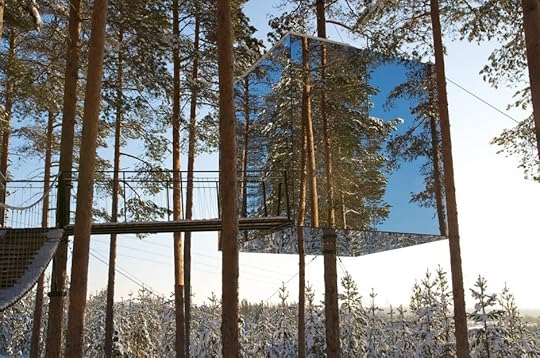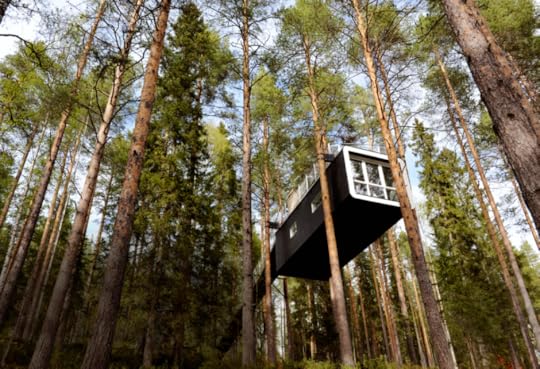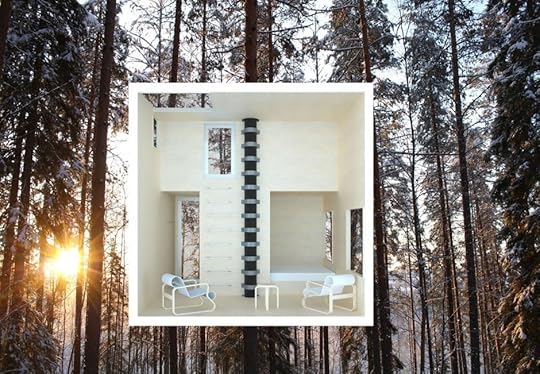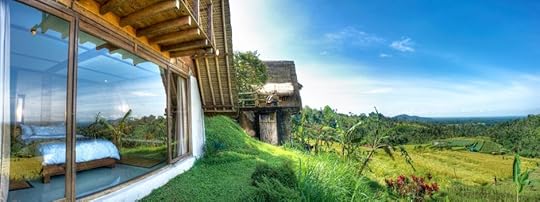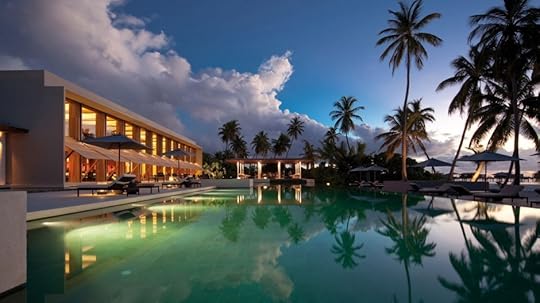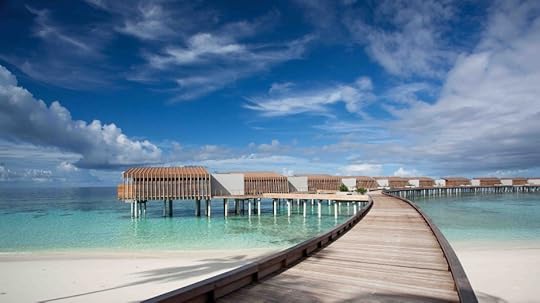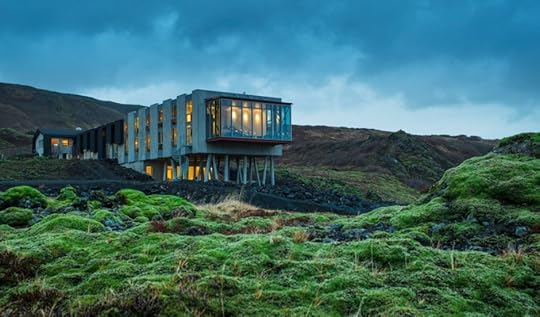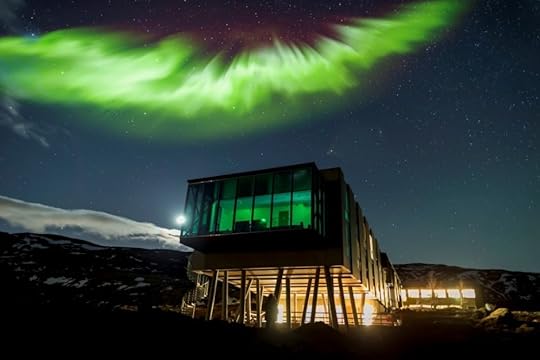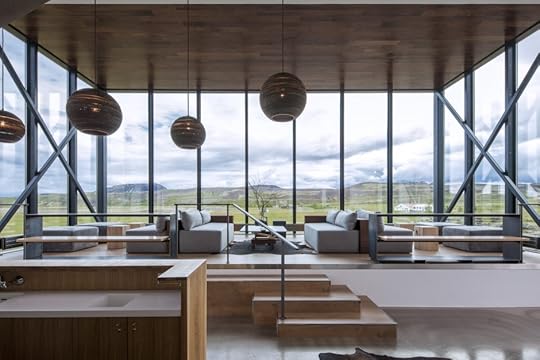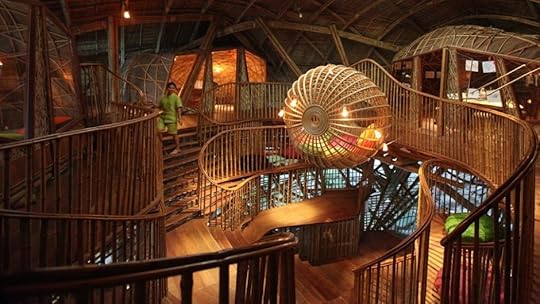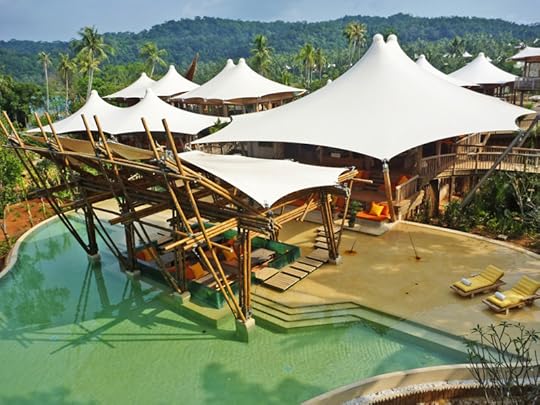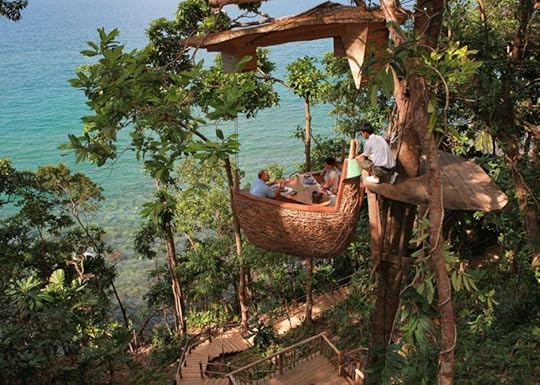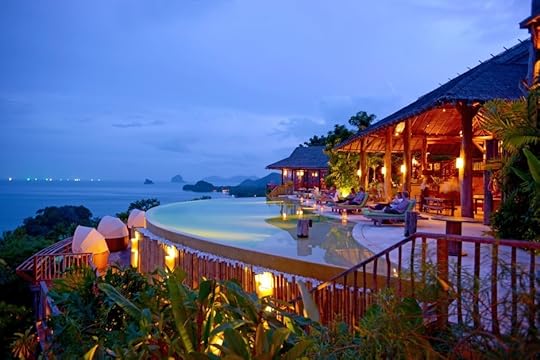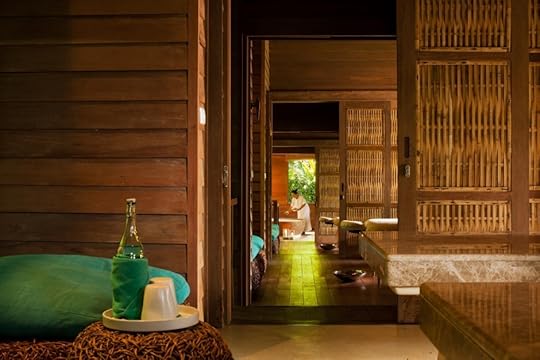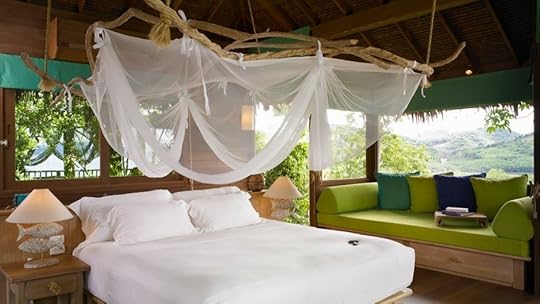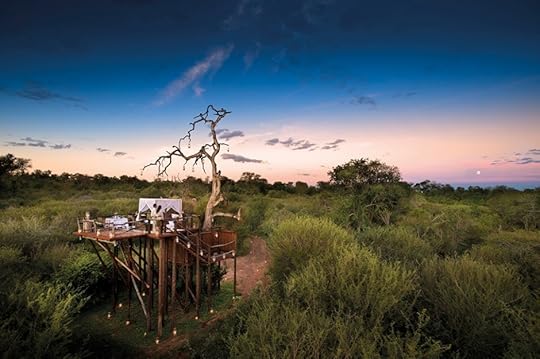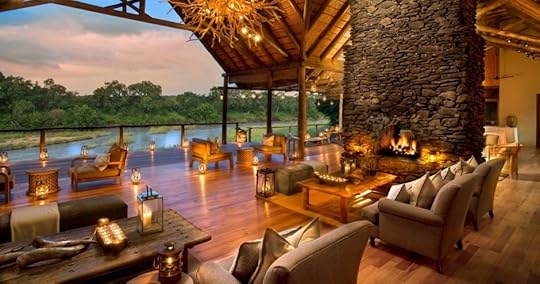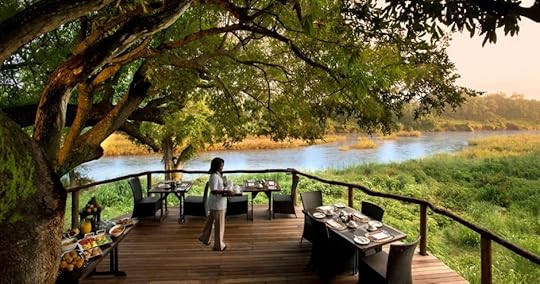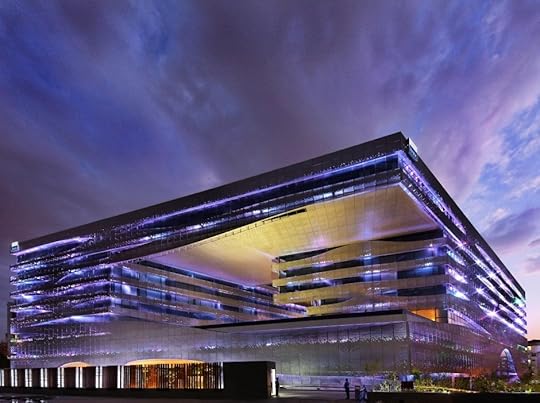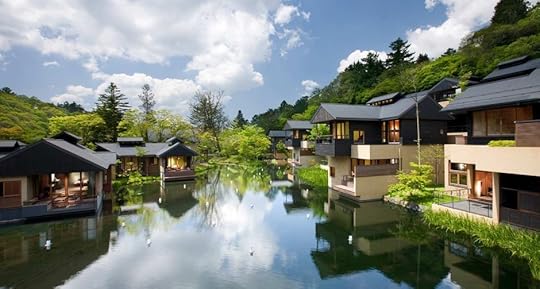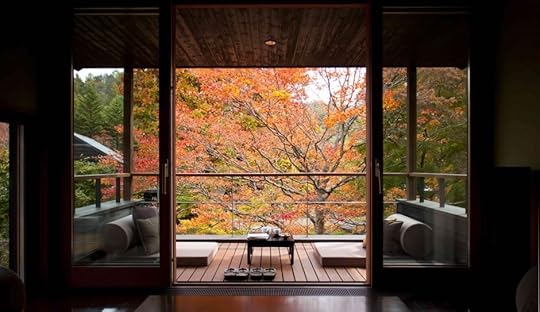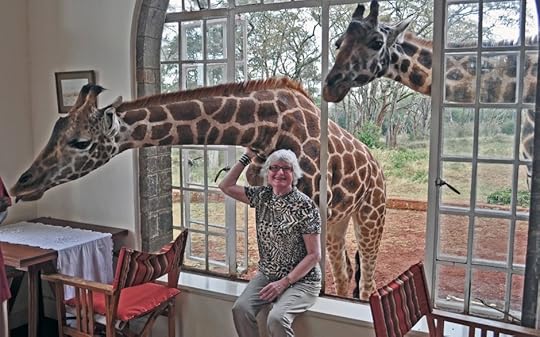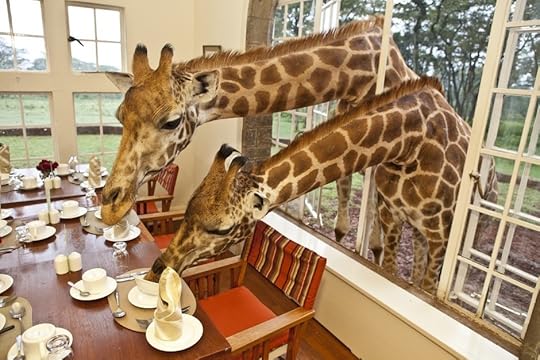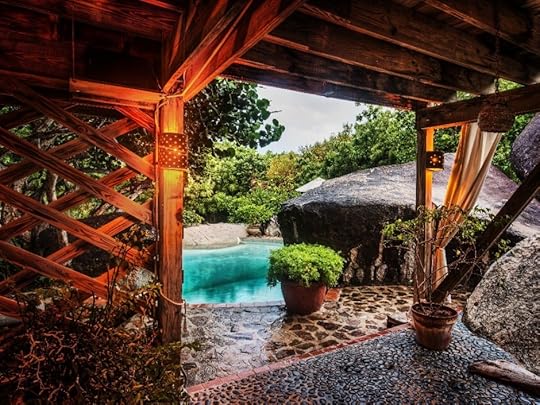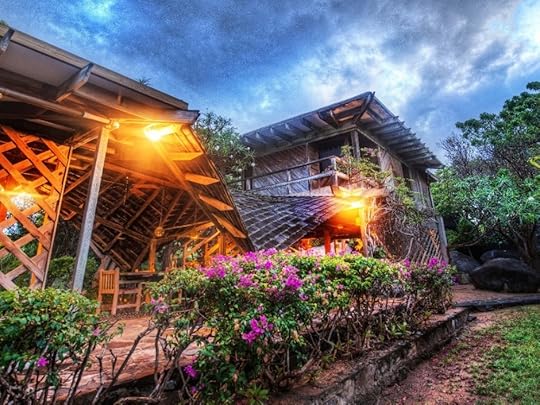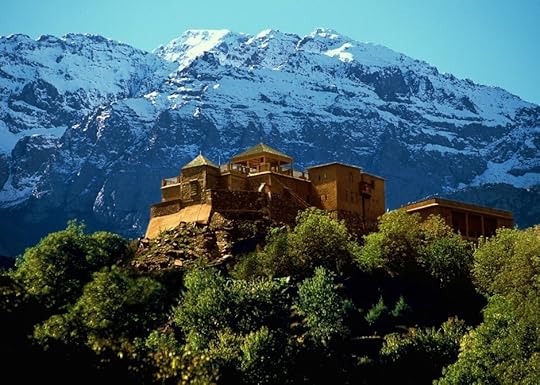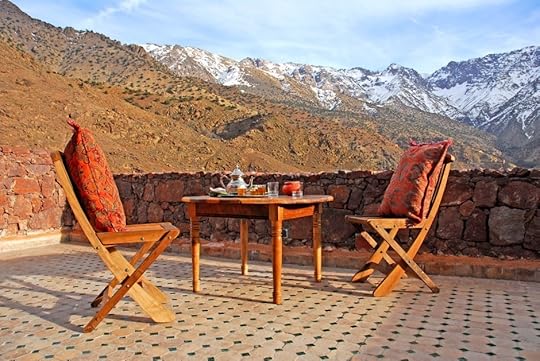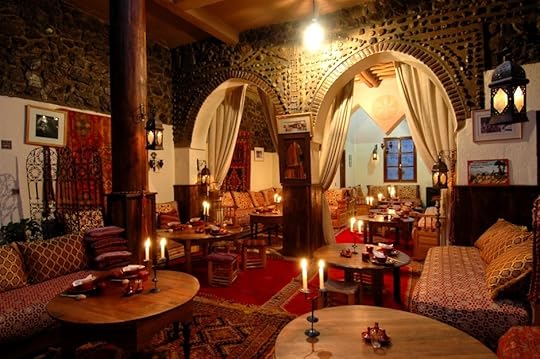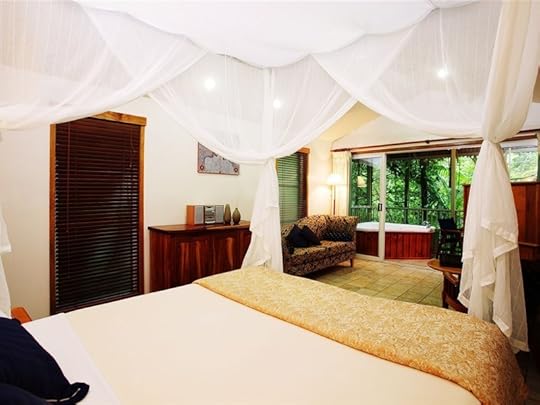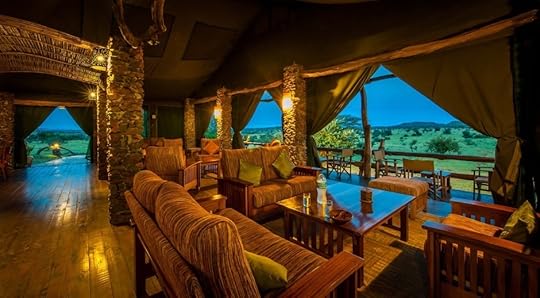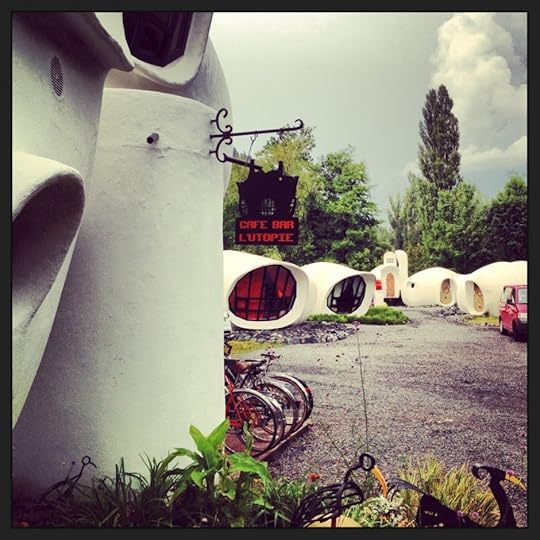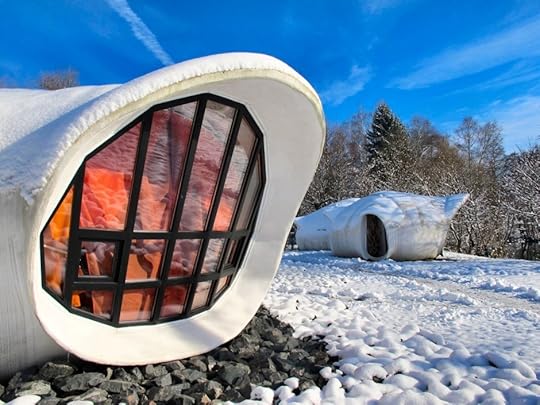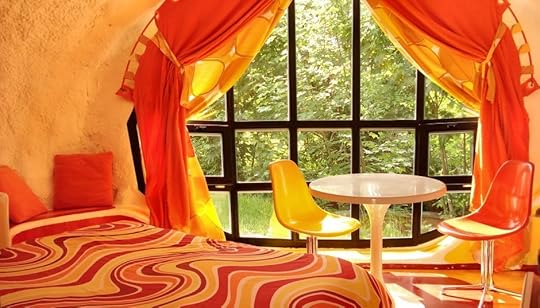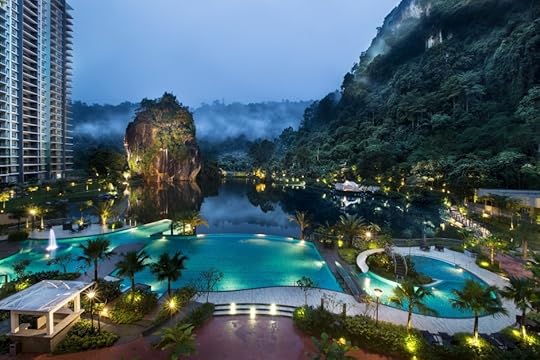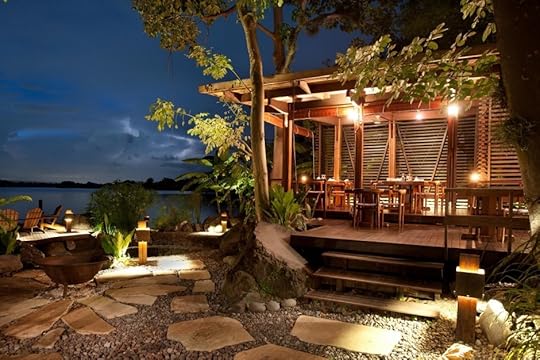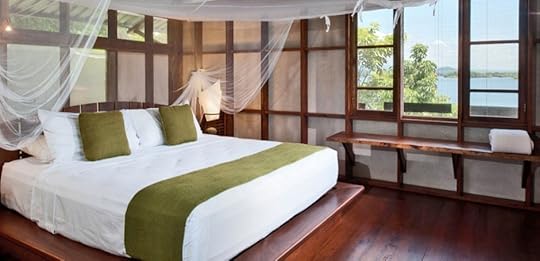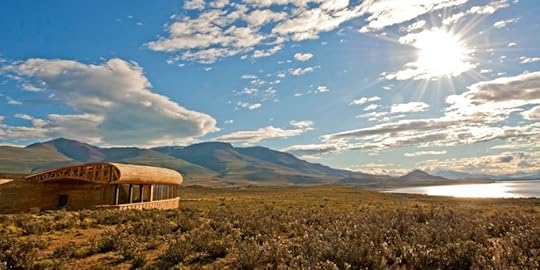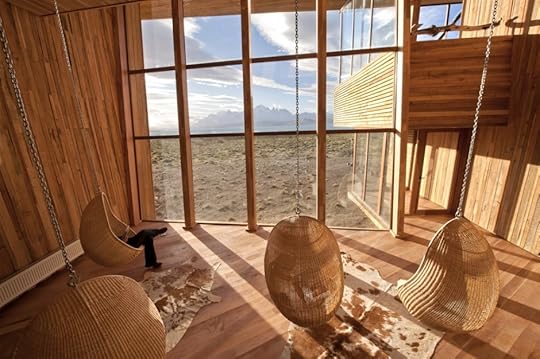Matador Network's Blog, page 2214
September 9, 2014
25 beautiful Thai temples
THAILAND IS UNIQUE in that it’s the most Buddhist nation on Earth, with around 95% of the population identifying as practicing Theravada Buddhists. This fact permeates daily life in a number of ways, from monks walking the streets for collections, to festivals tied to auspicious dates, to, of course, the temples.
There are an estimated 40,000 Buddhist temples in Thailand, official and otherwise. Thai temple architecture, while sharing influences with other Southeast Asian styles, is also unique. Typically comprising a multi-building complex, Thai temples, or wats, feature a tall, bell-shaped stupa, ordination and sermon halls, a space for shrines and Buddha images, and a residence for the monks. Temple roofs are often quite striking, with multiple tiers and gables ending in long, thin ornaments called chofahs.
Many temples are open to tourists — just be sure to dress appropriately (closed-toed shoes, shorts/pants that cover the knee, no bare shoulders) and act respectfully (no hats, sunglasses, smoking, gum chewing, or overly loud talking, and remember to remove your shoes before entering worship areas and to wield your camera thoughtfully). Below are some of the sites you’ll definitely want to check out. 
This post is proudly produced in partnership with the Tourism Authority of Thailand and STA Travel, working together to tell stories of the peoples, places, and cultures that make Thailand special.

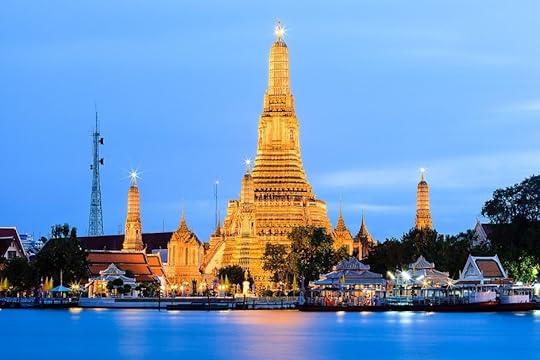
1
Wat Arun
Wat Arun, known as the Temple of Dawn, derives its name from the Hindu god Aruna, personified as the rising sun. Its impressive 230ft (70m) spire is one of Bangkok’s most famous landmarks, especially when lit at night along the Chao Praya River.
Photo: Somphop Nithipaichit
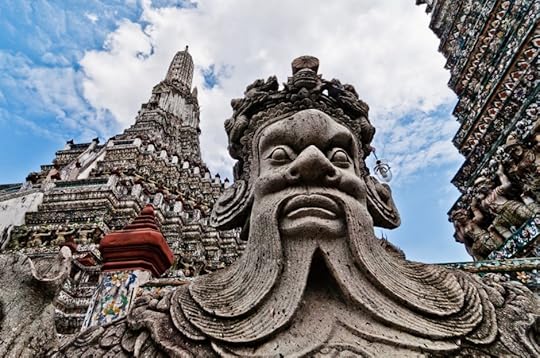
2
Wat Arun detail
Photo: Mark Fischer
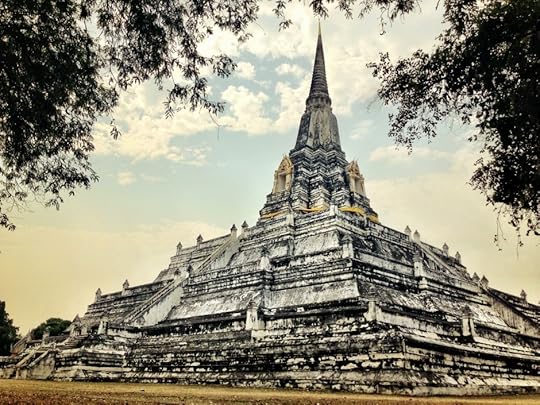
3
Wat Phu Khao Thong
Wat Phu Khao Thong, or Golden Mountain Temple, was built in 1387. The original Burmese-style chedi (stupa) succumbed to time—what you see today is a restoration initiated by King Boromakot with a new chedi in the Thai style constructed on the old one’s base. A 2kg (4.4lb) gold ball sits at the top of the structure.
Photo: Karl Baron
Intermission
4
17 of Southeast Asia’s most photogenic temples
by Joe Batruny
1
18 views of Southeast Asia’s wildest temple: Chiang Rai’s Wat Rong Khun
by Joe Batruny
23 colorful images of art and architecture in Oakland, CA
by Hal Amen
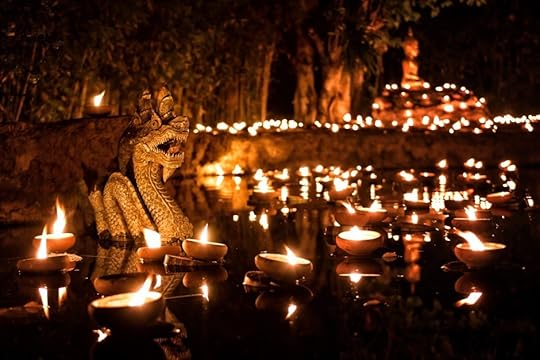
4
Temple naga, Chiang Mai
A naga, surrounded by candles, guards a pond in one of the temples in Chiang Mai during the Visakha Bucha holiday. This highly ceremonial annual event sees Thai people make merit by going to temples and engaging in Buddhist activities.
Photo: Author
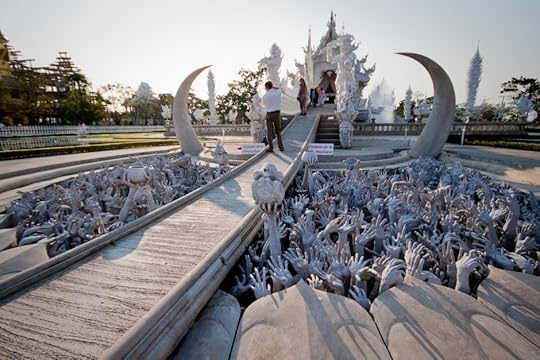
5
White Temple
Unlike most Thai temples, Wat Rong Khun, known as the White Temple, is the dream-come-true work of art of Thai painter Chalermchai Kositpipat. Located in Chiang Rai, the whole structure is covered in whitewash and mirror chips and the architecture has been imbued with riddles, teachings, and Buddhist philosophy.
Photo: Author
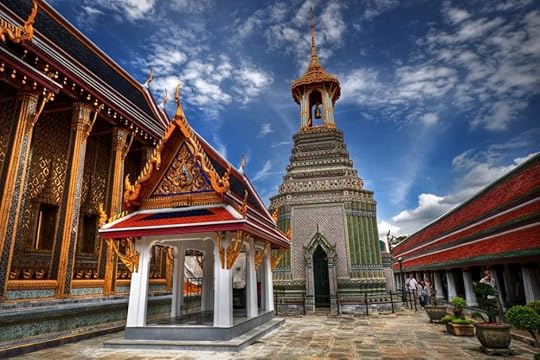
6
Grand Palace
Though not a temple itself, Bangkok's Grand Palace complex is an impressive site and does house one of the most important temples in the country, seen below.
Photo: Greg Knapp
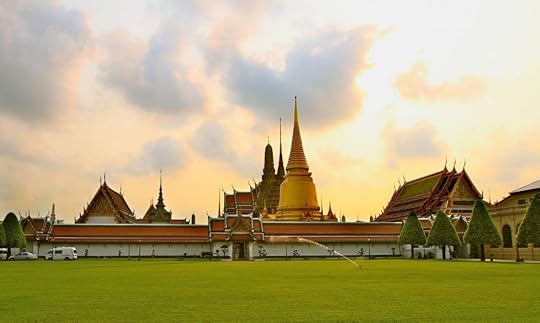
7
Wat Phra Kaew
Located in the Grand Palace complex, Wat Phra Kaew, also known as the Temple of the Emerald Buddha, is typically regarded as the most important temple in Thailand. It is the home of the Emerald Buddha, a highly revered statue of Buddha in meditation, carved from a single block of jade.
Photo: Sodacan

8
Wat Phra Kaew detail
Photo: Joe Stump
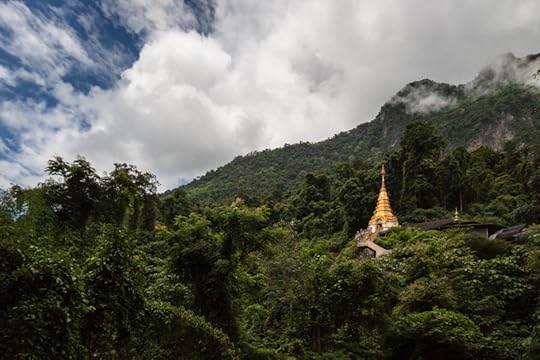
9
Wat Tham Pha Plong
Wat Tham Pha Plong, located in Chiang Dao in Northern Thailand, is a peaceful temple partially carved into a cave. Located on top of a limestone hill, it's reached by climbing 508 steps, with Buddhist teachings and quotes plastered along the way. It's a place to relax and meditate with a splendid view over the forest.
Photo: Author
Intermission
5
30 of the world’s most impressive ancient ruins
by Joe Batruny
9
40 of the world’s most impressive skylines
by Alex Scola
2
15 stunning images of the world’s floating markets
by Joe Batruny
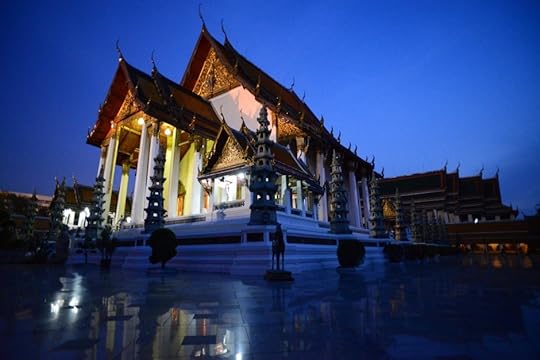
10
Wat Suthat
Bangkok's Wat Suthat is an important royal temple. Construction began in the early 1800s but wasn't completed until 1847. Find it in the central district of Phra Nakhon.
Photo: Nicolas Lannuzel
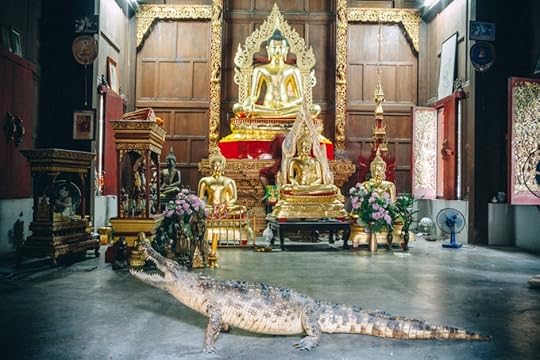
11
Wat Kutao
This temple in Chaing Mai features a stuffed crocodile in its main hall along with its Buddha images.
Photo: Scott Sporleder
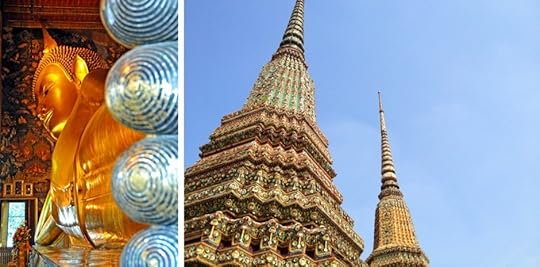
12
Wat Pho
Wat Pho sits right next to the Grand Palace in central Bangkok. One of the city's oldest temples, it's probably best known (and visited) for its 160ft-long reclining Buddha.
Photos: Dennis Jarvis and Carles Tomás Martí
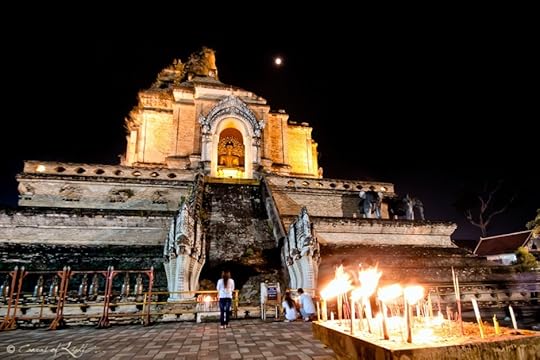
13
Wat Chedi Luang
Built in the mid-15th century, the stupa behind Wat Chedi Luang used to be the home of the famous Emerald Buddha. After an earthquake destroyed the upper portion of the structure in 1545, the statue was moved to Bangkok. The stupa stands about 60m tall (~200ft) and is the highest building inside Chiang Mai's Old City.
Photo: Author
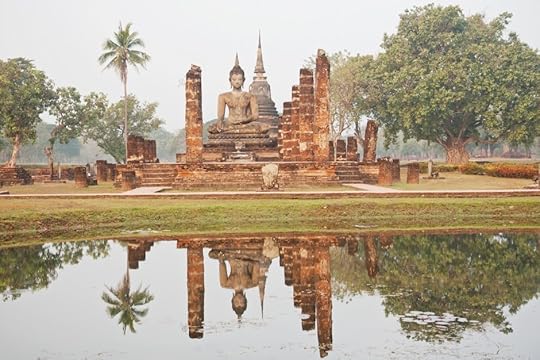
14
Wat Mahathat
Wat Mahathat is one of the ruins in the Sukhothai Historical Park, site of an ancient Thai kingdom in the north of the country. Total ruins number almost 200, making this an awesome place to visit and explore.
Photo: Andrea Schaffer
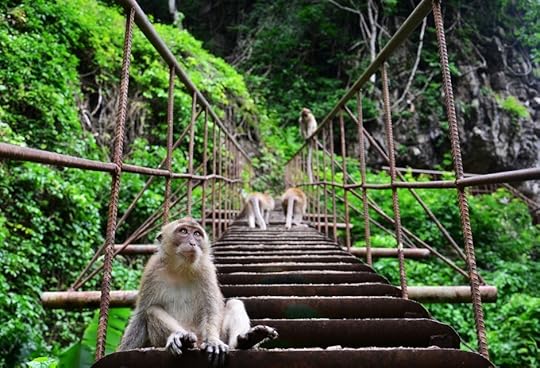
15
Khao Sok Monkey Temple
The Panturat Temple is a small cave that's more commonly known as the Monkey Temple or Monkey Cave, thanks to the preponderance of local macaques who are more than happy to pose for pictures in return for a chance to swipe your lunch.
Photo: Kerem Tapani Gültekin
Intermission
4
30 of the trippiest buildings around the world
by Abigail Fox
3
33 colossal monuments and statues around the world
by Joe Batruny
13
30 images of Scotland we can’t stop looking at
by Hal Amen
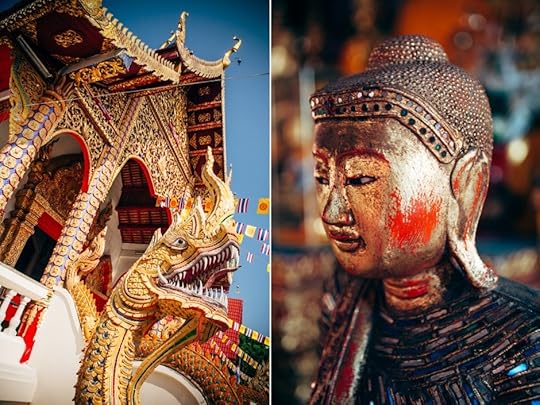
16
Wat Dokeung
One of Chiang Mai's 18 or so Buddhist temples, Wat Dokeung is adorned in brilliant colors, statue work, and architectural details.
Photo: Scott Sporleder

17
Wat Doi Suthep
Wat Doi Suthep, located on the mountain of the same name, overlooks the city of Chiang Mai and is an important pilgrimage site for Buddhists all over the country. Legend says the location of the temple was decided by a white elephant carrying a relic of Buddha and released into the jungle by King Nu Naone.
Photo: Tevaprapas
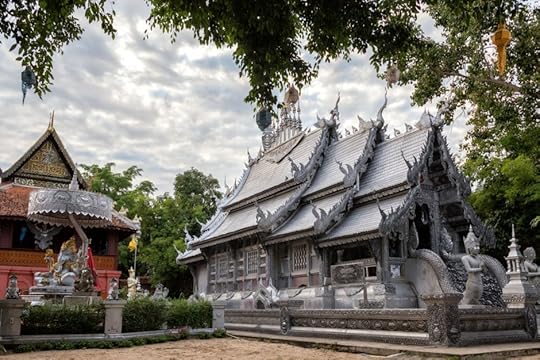
18
Wat Sri Suphan
Located near Wualai Street, known as the silversmiths’ district, Wat Sri Suphan stands out from all other temples in Chiang Mai due to its being entirely covered in locally crafted silver panels, both inside and out. The temple also houses a silver-working school to maintain the local silvercrafting industry.
Photo: Author
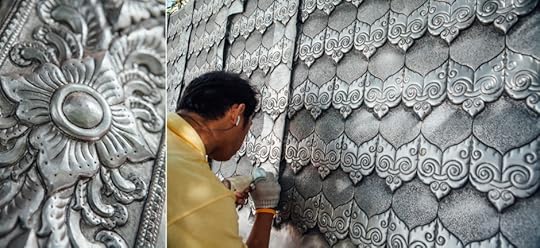
19
Wat Sri Suphan detail
Photo: Scott Sporleder
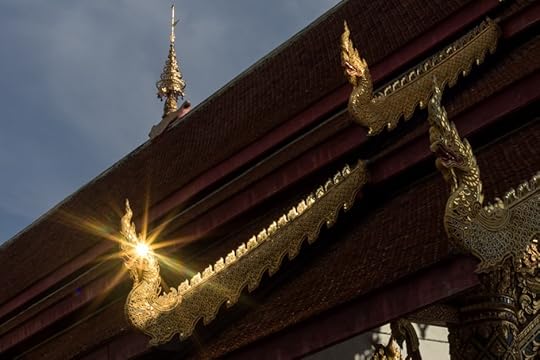
20
Temple nagas
The setting sun reflecting on the eye of a naga sculpture on top of a temple. According to Thai mythology, nagas are cobra-like deities that served Buddha and are given key positions on Buddhist temples, guarding entrances and ornamenting the roofs.
Photo: Author

21
Sanctuary of Truth
The Sanctuary of Truth, located by the seashore near Pattaya in Chonburi Province, is a gigantic structure made entirely of wood (no metal nails are used). The whole temple is covered with hand-carved sculptures based on Buddhist and Hindu motifs. The temple is a work in progress and is scheduled to finish in 2025.
Photo: SvenErik1968
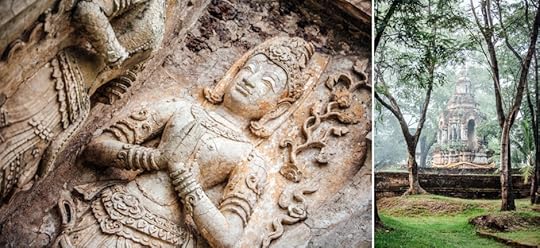
22
Wat Chet Yot
Northwest of Chiang Mai's city center, Wat Chet Yot dates to 1455. Its worn stone walls feature stucco reliefs of gods modeled after the king who commissioned its construction.
Photo: Scott Sporleder
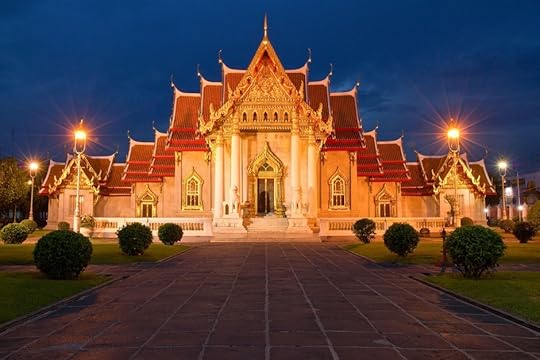
23
Wat Benchamabophit
Wat Benchamabophit, also known as the Marble Temple, is made of white Carrara marble imported from Italy. The structure is a good example of modern Thai temple architecture mixed with Buddhist motifs and European influences.
Photo: Manoonp
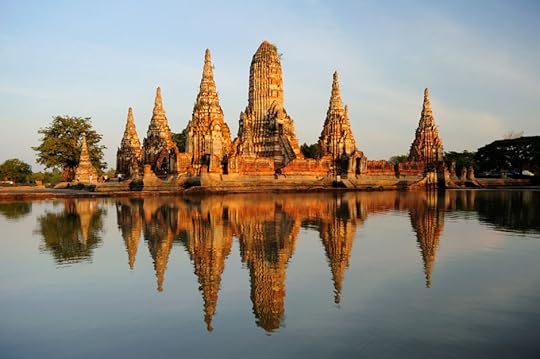
24
Wat Chaiwatthanaram
Ayutthaya is the old capital of Thailand and home to the ruins of Wat Chaiwatthanaram, among many other structures. Find it an hour or two upriver from Bangkok.
Photo: เกริกชัย อินทร์ปอ
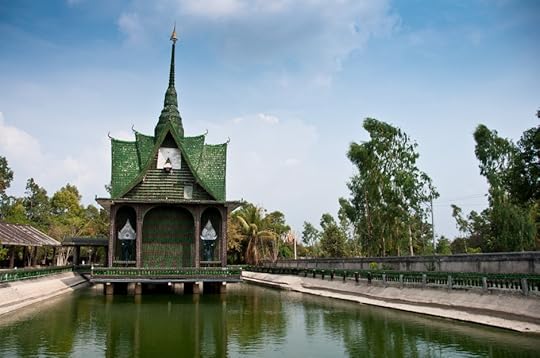
25
Temple of a Million Bottles
True to its nickname, “Wat Lan Kuad” or “Temple of a Million Bottles” is one of the most unique temples in Thailand, made entirely of glass containers. More than 1.5 million bottles were used to build the temple, as well as a few other buildings such as the crematorium and the toilets. The monks are still accepting bottles to recycle and expand the temple.
Photo: Mark Fischer

September 8, 2014
The summertime beauty of Utah
Follow Matador on Vimeo
Follow Matador on YouTube
Earlier this summer, Matador filmmaker and director of productions Scott Sporleder took his camera to northern Utah to capture the ski mountains, the lakes and reservoirs, and the cities of the I-15 corridor — all in their summer glory. What he came back with is simply beautiful.
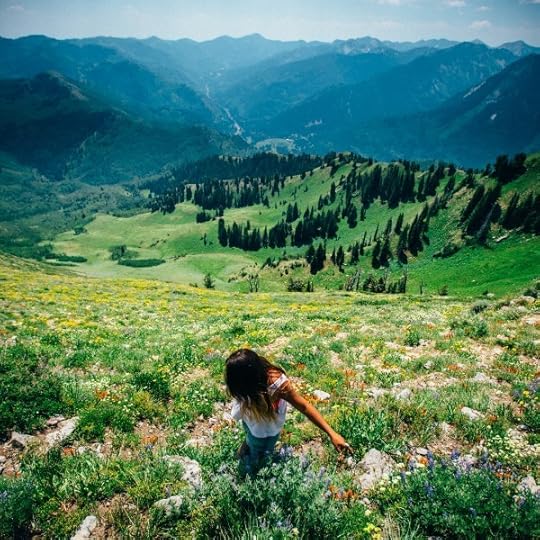
Video highlights
Keep your eyes peeled for:
0:27 – Hiking the trails of Snowbasin, with wildflowers in place of snow
0:46 – Water recreation at Pineview Reservoir
0:55 – Climbing the Mount Ogden Via Ferrata in Waterfall Canyon, just outside the city of Ogden
1:23 – Downtown Ogden, Utah
1:32 – Enjoying beers and eats at Roosters Brewing Company
1:40 – Blues, Brews, & BBQ summer concert series at Snowbasin
1:55 – Exploring the High Uintas via ATV
2:22 – Embracing a slower pace at Mirror Lake in the High Uintas
2:42 – Aerial shots of the stair-step Provo River Falls, just off Highway 150 in the High Uintas Wilderness

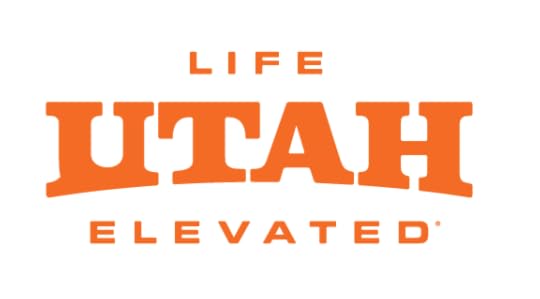 This post was proudly produced in partnership with Utah, home of The Mighty 5®.
This post was proudly produced in partnership with Utah, home of The Mighty 5®.

GoPro footage of dog at beach
Follow Matador on Vimeo
Follow Matador on YouTube
NOT THAT I NEED ANOTHER EXCUSE to visit Italy, but this video pretty much proves how fantastic this country is — even the dogs have it good. Walter, a Labrador who lives in the gorgeous town of Siracusa, Sicily, loves swimming so much that he makes navigating through the maze-like property of his owners, and diving straight into the Mediterranean Sea, look easy. If shaky-cam footage gets you a little dizzy, watch the second video for a clearer shot. 

9 first impressions of Cleveland

Photo: maureen_sill
1. Nightlife is limited.
It’s been a month since I moved from Boston to Cleveland. My 30-day impression of the Cleveland nightlife scene is that I have three choices:
Cleveland Heights: chain bars that your uncle from Tampa would love. Wood-paneled, windowless rooms with TVs in every corner, placemat menus, and neon beer signs. While atmosphere is lacking, these places are redeemed by their specials. I would eat 50-cent wings in a closet if I had to.
Downtown: “nightclubs” that could be the setting of “Jersey Shore: Ohio.” There’s nothing quite like watching a sweaty, orange 32-year-old in a tiny glittery t-shirt “fight the beat” on a roof bar that overlooks all two of the buildings in downtown Cleveland.
Tremont/Ohio City: Midwestern hipster bars. The clientele are a dorkier version of East Coast hipsters, but the creative food and extensive beer selection in these places make them okay.
2. Public transportation is nonexistent.
I didn’t bring a car here, so the only reliable transportation I have is my own two hooves and a sparkly gold bike that a generous relative gave me for free. I took the HealthLine bus downtown once, but it stopped every two blocks and took 45 minutes to cover eight miles. Cleveland isn’t very centralized — it’s mostly made up of small, somewhat isolated neighborhoods — so I’ve been sticking to Little Italy / Cleveland Heights for the most part.
3. There’s more wildlife here than I expected.
The east side of Cleveland is surprisingly full of wildlife. In addition to squirrels the size of small cats, tiny chipmunks zoom around the lawns here before disappearing underground into what I imagine to be a vast network of tunnels. I’ve had several encounters with a raccoon family at night and early in the morning — a mom and her three fat, fuzzy little babies bumbling from trees to dumpster in search of snacks.
In the morning, bright red cardinals and noisy blue jays break the suburban silence with their piercing calls. At dusk, you’ll see fireflies — little specks of light blinking and slowly meandering around the grass like embers blown off a campfire.
4. Cleveland Heights cops are a joke.
There are tons of them. They don’t seem to be good for much besides nailing drivers for doing 27 in a 25, and raining down parking tickets on unsuspecting newcomers. On my first day here, I got a ticket for parking my U-Haul on the side of a wide, empty street without any obvious “no-parking” signs. During the five minutes I spent in the hardware store, a cop materialized out of thin air and wrote me a ticket. Welcome to the neighborhood.
5. The weather is less sucky than expected.
I felt like I’d already reached my limit of gloomy weather in Boston, so learning that Cleveland is one of the cloudiest, rainiest cities in the country was disheartening news. But so far, the weather hasn’t been bad at all.
When it rains in Boston, it reminds me of the miserable, steady drizzle of a runny nose. It goes on forever and generally ruins the whole day. In Cleveland, the rain is a whole different animal. There’s nothing quite like waking up on a Sunday morning to gentle pattering on the leaves of the big tree right outside your bedroom window, hearing thunder rolling in the distance, and seeing the dawn light filtering in through the clouds.
I’m writing this in August. We’ll see how I feel about the weather in six months.
6. Recycling exists. It is not used.
Even though the city of Cleveland has a big, bad single-stream recycling program, people don’t seem to be participating in it. All you have to do is put your recycling out on the sidewalk. It’s picked up weekly. It disappears. But the dumpster behind my apartment is full of cardboard, glass, and plastic. Recycling doesn’t seem to be a part of the culture here the way it is in the Northeast.
7. There’s lots of unique food and delicious beer.
The food here is quirky. Not something I expected given the common stereotype of the stodgy Midwesterner. Weird, cheap food plus a great tap menu seems to be a predominant theme in Cleveland. So far, my favorite place to eat is Happy Dog. This restaurant serves three things: hot dogs, tater tots, and beer. The dogs and tots come with an array of delicious toppings, from your basic ketchup, mustard, cheese scenario, to fried eggs or fruit loops. They even list their favorite combinations on a specialty page titled “Suggestive Wieners.”
One thing missing in the Cleveland food scene is delivery. Where are Seamless Web and GrubHub? The only upside to nonexistent delivery is I’m forced to shower and regularly go outside to feed myself.
8. Clevelanders are pretty religious.
Christianity plays a bigger, much more public role in people’s lives here than it does in Boston. Anti-choice posters are displayed prominently on the streets around town, and God is mentioned very frequently in casual conversation — even at my secular medical school.
Coming from a very liberal part of the country and working in research — where virtually everyone is either private about religion or not religious at all — this has been quite the adjustment for me. It creeps me out a little when someone starts rattling on about “God’s plan” or whatever, but it’s also made me realize my own perpetual stream of F-bombs and Jesus Christs are probably more offensive than I used to think.
9. This YouTube video is more accurate than I’d like it to be.
Welcome to Cleveland. 

40 eco-hotels you have to visit
Misool Eco Resort sits within the 46,000km² Raja Ampat Shark and Manta Sanctuary, and contributes to 9 community and conservation projects in the region. (, , )
2. Treehotel (Harads, Sweden)
The treehouses of Sweden’s Treehotel can be found in the middle of the forest, but their contemporary designs aren’t exactly reminiscent of your childhood treehouse. And with water-efficient sinks, combustion toilets, and low-energy LED lighting, the Treehotel is more eco-friendly than most. (via, via, via, via)
3. Desa Atas Awan (Desa Bangli, Bali)
An eco-boutique an hour northwest of Ubud, Desa Atas Awan (meaning Village Above the Clouds) was designed by a local architect. The hotel supports “responsible travel” to nearby areas as a way of conserving the environment and improving the local economy. (via, via)
4. Park Hyatt Maldives Hadahaa (Hadahaa, Maldives)
Named 2013′s “Best Sustainable Hotel in Asia Pacific” in the International Hotel Awards, Park Hyatt Maldives Hadahaa is celebrated for its conservationist efforts, as well as unreal snorkeling and diving opportunities just seconds from the overwater bungalows. (via, via, via)
5. ION Luxury Adventure Hotel (Selfoss, Iceland)
Less than an hour from Iceland’s capital, ION Luxury Adventure Hotel was given a nod in the sustainability category of the Boutique Hotel Awards. It’s not a terrible place to watch the aurora borealis from, either. (via, via, via)

See more like this: 48 epic dream hotels to visit before you die
6. Soneva Kiri (Ko Kut, Thailand)
In 2011, Soneva Kiri was recognized as the “World’s Leading Eco-Resort and Spa” by the World Travel Awards. The resort’s 35 poolside villas were built with sustainable materials, and Soneva Kiri makes efforts to recycle waste, conserve water, grow organic products, and preserve the local environment and marine life. (via, via, via, via)
7. Thon Hotel EU (Brussels, Belgium)
Part of a chain, the Thon Hotel EU in Brussels may not give off the eco-friendly look, but it donates all of its unused shampoos, holds its own blood donation days, and even has a We-bike to convert human power into electricity, helping charge laptops and mobile phones. (via, via, via)
8. Six Senses Yao Noi (Ko Yao Noi, Thailand)
Six Senses Yao Noi looks traditionally luxurious but focuses on being environmentally friendly. The resort tries to reduce energy usage, manage water and waste, and limit noise pollution. (via, via, via, via)
9. Lion Sands Game Reserve
Comprising several eco-friendly lodges, Lion Sands Game Reserve is home to the popular Chalkley Treehouse. You won’t be emitting much carbon while staying in the famous structure — all you’ll have access to are torches, lanterns, a two-way radio, and insect repellent. (via, via, via, via)
10. The Park Hotel Hyderabad (Hyderabad, India)
With over 250 rooms, it might surprise you to see the Park Hyderabad on this list. However, in 2011 the hotel was given LEED’s Gold status due to its efforts towards using recycled building materials, lowering carbon emissions, making energy savings, and improving water efficiency. The hotel design minimizes heat gain and makes exemplary use of natural light. (via, via, via)
11. Hoshinoya Karuizawa (Karuizawa, Japan)
By using three hydro-generators, Hoshinoya Karuizawa is an impressive resort that’s considered to be 75% energy-independent. Geothermal heat harnessed from the hot springs heats the property, and the hotel also composts food waste and trades vegetables with suppliers. (via, via, via)
12. Giraffe Manor (Nairobi, Kenya)
As the name suggests, Giraffe Manor has some unusual permanent residents. The Safari Collection property teams up with Ewaso Lions and the Mara Cheetah Project to push awareness and wildlife conservation efforts in the area. (via, via)
13. Toad Hall Vacation Villa (Virgin Gorda, British Virgin Islands)
An “eco-sensitive villa” on Virgin Gorda, Toad Hall Vacation Villa has just three bedrooms. It’s rented out as one complete building, so book in advance to enjoy those morning views of Drake’s Passage. (via, via, via)
14. Kasbah du Toubkal (High Atlas Mountains, Morocco)
Located in Toubkal National Park, Kasbah du Toubkal has been a finalist in the “Best Accommodation for the Environment” category in the Virgin Holidays Responsible Tourism Awards. (via, via, via)
15. Daintree Eco Lodge & Spa (Queensland, Australia)
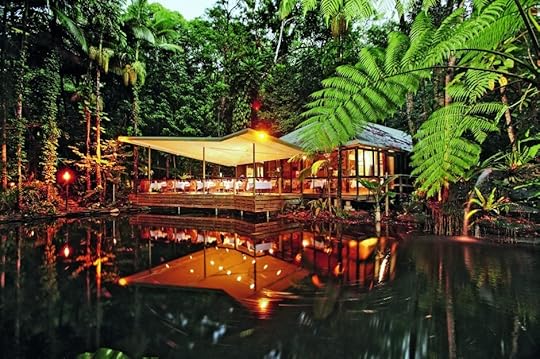
A 16-acre eco-resort, Daintree Eco Lodge & Spa is located in one of the world’s oldest rainforests. Ninety minutes from Cairns, its 15 villas sit high in the trees, and the hotel’s design has won several awards. (via, via)

See more like this: The 15 most expensive hotels in the world
16. Grumeti Migration Camp (Serengeti, Tanzania)
Based in the Grumeti Game Reserve, near Serengeti National Park, Grumeti Migration Camp is an eco-lodge where the key philosophy is sustainable travel and “active conservation of the natural habitat.” The camp makes as much use of solar and wind power as possible, and is working towards sustainable practices in all other aspects of its operation. (via, via)
17. Museumotel (Raon-l’Étape, France)
Designed in 1966 by architect Pascal Hausermann, the unique Museumotel makes use of concrete veils and layers of thermal insulation in order to keep the hotel temperate at all times, regardless of outside temperatures. Each “bubble” has a different theme, making it even more enticing to return to the hotel year after year. (via, via, via)
18. Best Western Premier: The Haven (Ipoh, Malaysia)
Best Western Premier: The Haven isn’t your typical hotel — it runs on 100% renewable energy by making use of its own wind and solar power systems. (via, via)
19. Jicaro Island Ecolodge (Granada, Nicaragua)
Jicaro Island Ecolodge was built with sustainability in its sights. The hotel only uses filtered water, heated by solar panels. You’ll also find energy-efficient lighting throughout the ecolodge, and the property has its own wastewater treatment plant. (via, via, via)
20. Tierra Patagonia Hotel & Spa (Torres del Paine National Park, Chile)
An eco-friendly contemporary hotel, Tierra Patagonia Hotel & Spa is based in one of the southernmost destinations in the world (barring Antarctica, of course). The hotel’s 40 rooms may not have television or internet, but they do contain thermal glass to keep the rooms warm at all times. (via, via)
See 20 more incredible eco-hotels
on page 2 >>

Up-close view of exploding volcano
Follow Matador on Vimeo
Follow Matador on YouTube
THERE ARE A FEW THINGS I won’t add to my bucket list — stepping into an active volcano is one of them. I’ll just live vicariously though Sam Cossman, George Kourounis, Geoff Mackely and Brad Ambrose, who are some of the first people to closely explore the Marum Crater in Vanuatu. According to Cossman, “More people have visited the moon than the fiery bottom of this spectacular and deadly place.” 

I was hit by a car in NYC

Photo: Feliciano Guimarães
I could feel the large tear in the side of my pants and my skin against the blacktop. Not wanting to immediately move my body in case something had been seriously injured, I lay on the potholed street and imagined the awkward view of my rump and splayed legs. When I opened my eyes, my nose was an inch away from a cigarette, and my hand was on top of a condom wrapper.
He’d driven a white minivan. He tried to beat traffic by making a mid-street U-turn and turned into me instead. Now he gave an apologetic wave and some uninterpretable half-bow, and then drove away. Maybe he didn’t have insurance; maybe he had somewhere to be. Who knew?
But then I heard shouts. Drawing closer and accompanied by heavy footsteps. Similar to the sensation when you put your ear to the sand at the beach and someone nearby begins to dig. I pushed myself up off the ground. “Miss, you okay?” I felt a hand on my back as I got to my feet. A late-20-something man in a t-shirt, jeans, and work gloves stood next to me. Another man, perhaps a pedestrian strolling by, crossed the street from the opposite side with a matched look of worry. “I can’t believe he ran into you! He saw you and sped up!”
One of the men picked up a piece of cardboard from the street, pulled a pen from his pocket, and quickly took down the license-plate number. “You look alright but just in case something feels off later.”
“Do you want to go to the hospital?” the other man asked. I shook my head. At this point I was biting my lip hard, wanting so badly not to cry. What I thought would come out as, “I’m okay, just a bit shaken and stirred up,” came out as “Imma — ” followed by a gasp and a sob and a waterfall of snotty tears.
“Aw it’s okay, miss, jus’ take you’ sweet time. Take a breath.”
“I can’t believe that sonofabitch hit you. He hit you and drove off!”
“You want some water or something? I can go get you some water.”
“He oughta be ashamed, man. Hittin’ and runnin’.”
Vision a salty blur, I picked my bike up and half smiled. Puffed up eyes and red patchy cheeks — admittedly I’m not the prettiest nor most graceful crier. I tried to make a joke that I was happy to learn I was a bouncer as opposed to a breaker, at which point my new friend with the shoulder-length braids furrowed a brow and asked again if I needed an ambulance.
A man driving a forklift drove up to us and said he saw what happened and asked if I was okay. At the same time, a short, clean-cut man who must’ve been his boss came out from behind the lift. He had that look I’d seen while working as a nanny: parents on the playground picking up their fallen, scraped-kneed children. He asked if I was all right, made a provocative hand gesture towards the street along with a curse to the long-gone driver, and then told me to come have a seat, that his wife would be out soon.
She walked into oncoming traffic while “drunk as a deer in headlights.” “It was the liquor that saved my life. I flew 20 feet and didn’t feel a thing.
A woman emerged from the factory front with a similar look of horror, and without a nicety exchanged, wrapped an arm around me and directed me towards a seat. There were two large spools of plastic tubing sitting on the sidewalk, and they reminded me of the ones I’d seen on various trips to Home Depot with my parents. The thought of them in that moment combined with the woman still hugging me close must have overwhelmed me because my eyes began to sting again.
“Honey, Rick told me what happened. I was in on the phone, but what really happened? This guy hit you in his car?” I gave her a quick recount of what I’d processed so far, to which she shook her head and patted my knee. She asked me if I wanted to go to the hospital — again I replied I could feel my shoulder and knee scraped, bruised maybe, but besides that I had hope it was more my pride that had taken the beating.
“How about we go get a beer, take some time to think it all over?”
I unexpectedly laughed, and she smiled, though I could tell the offer was sincere. She then went on to share with me the story of her own accident in college. She had “deserved it” — she walked into oncoming traffic while “drunk as a deer in headlights.” “It was the liquor that saved my life. I flew 20ft and didn’t feel a thing. Walked right on home with a bloody elbow and a cure for my hangover.” She gave me a wink.
I found out her name was Catherine. She and her husband part-owned the electrical supply company behind us. She lived in Manhattan, had lived in her Midtown West apartment for over a decade, and it was her first day “on the job.” She laughed as she recalled the few hours of her day she’d spent working, which included various trips to the coffee and bagel store and a half-hour phone conversation with her mother in Staten Island. Her husband, Rick, came out and handed me a gallon of water. He shrugged his shoulders and with a chuckle told me he’d sent one of his guys to get me a water, and this is what they returned with. A whole gallon just for me. He gave Catherine and me each a plastic cup, and we had a little water and story picnic outside of their warehouse, while a small tributary of blood went unnoticed as it trickled down my shin and into my sock.
We talked a little while longer, and Catherine decided she was going to try the yoga studio where I was supposed to teach later that day. She said she’d likely embarrass herself, and exercise wasn’t her thing, but she needed to do something or else she’d go crazy. Just like the rest of us, I replied.
By the time I left, about 10 minutes later, I’d stopped thinking about what had just happened and finally caught my breath. I gave Catherine a big hug, my hands smarting in the places that had hit the gravel. I thanked her and Rick and waved to the man on the forklift. The piece of cardboard with the license-plate number was still crumpled in my hand. I felt myself wanting to cry — yet again — as I walked away with my bike (it being fortunately unmarred). I think I was sad to leave them; even sadder to be alone.
It sounds a bit mad to confess, but I’m glad the accident happened. And that it happened the way it did. The unpredictability of this Black Swan life means anything could happen at any time. The accident could’ve been a helluva lot worse. It allowed me to step back and realize there are some unsung heroes and noteworthy human beings surrounding me all the time, and that I should take the time to talk to them.
Getting hit immediately put the brakes on my day and shredded the anxiety of my to-do list. I didn’t plan for it. I was forced to slow down and connect with these strangers who came to my aid. I needed other people. I learned something about Catherine and her family, and more importantly about the people in my community, my neighbors who at the end of the day are looking out for me and for one another.
I hope to go back to see Catherine, under better circumstances of course. I should make a point to again thank her and her husband before this accident becomes blanketed by the day-to-day. Before it becomes hazier and farther away, as a line in a book underlined and meant in earnest to be returned to. I should thank them for simply being kind, for taking the time to make sure this young girl and her neon bike were okay. To listen and to care. 

The pottery master of Croatia
Follow Matador on Vimeo
Follow Matador on YouTube
Many times on the road, I have no idea what people are saying because I don’t speak the language. Communication happens anyway. Not only through the charades of gesticulation or the subtle cues of body language, but often I learn by watching what people do.
I don’t speak Croatian, but this potter’s quick, precise movements show me that he has probably dedicated much of his life to creating pottery. He’s a craftsman, even as he “mass produces” his dishes. Watching him pile perfectly chopped wood around a pile of pots makes me think he’s a traditionalist, whether by choice or necessity.
And, finally, seeing the dishes in action, I gain a deep appreciation for his craft, as well as the history of his technique. Even without talking directly to the craftsman, I appreciate that these portable ovens represent a culture of movement, whether diasporic, or simply the lifestyle of herding livestock.
While I would love to hear about the history of his craft through the potter’s words, it is his actions that offer a real glimpse into his life and the area he comes from. 

Gorillas of Odzala, Congo [pics]
It took a long time for Spanish primatologist Magda Bermejo to win the trust of the Ndzehi people, which had worn thin as they’d watched western lowland gorillas in the Congolese rainforest being poached, hunted for trophies, or shipped off to zoos. But once she’d earned their respect, the Ndzehi packed up their whole village and moved with Magda to Lossi, home to the largest population of gorillas in Congo, to help her with her research. Their intimate knowledge of the rainforest and gorilla-tracking skills proved invaluable to Magda’s work.
There are today estimated to be 20,000 of these intriguing primates in Congo’s Odzala National Park, where two ecolodges — Lango and Ngaga — have just opened to give travelers a chance to see these rare primates in a pristine and little-known wilderness. 
Sophie was a guest of Go2Africa on this trip; all words and photos are her own.

1
Before sunup, the trek begins, led by Calvin, an experienced tracker. The day before, Calvin had left silverback Jupiter and his family at a nest only a few miles from camp, but he knows gorillas can move as far as six miles in three hours, so it’s critical to get to their last-known nesting place while the trail is still fresh. To navigate their way through the dense foliage, Magda and the trackers have created a large network of paths through the tall marantaceae, or arrowroot plants, dividing the rainforest into a patchwork of vivid green.

2
The gorillas move so effortlessly through marantaceae that trackers describe it as "swimming through the leaves." This means Calvin and Karl often lead us off the path into the undergrowth, communicating under their breath in French. The closer we get to Jupiter and his clan, the quieter we must be.

3
Suddenly, the trail seems to go dead. "They're playing with us today," says Calvin. He scans the ground for upended roots, discarded fruit, or seed pods, spoor, and broken arrowroot stems, listening intently for the telltale rustle of the stealthy primates.
Intermission
2
11 stunning images of Arctic wildlife
by Espen Lie Dahl
16
44 surreal scenes from Australia’s Great Barrier Reef
by Scott Sporleder
6
The incredible things you’ll see on a road trip through Namibia [pics]
by Scott Sporleder

4
As he’s picking up the trail again, Karl shows us the surprisingly tasty fruit the gorillas feed on in the dry season.

5
When Calvin senses the group is nearby, Karl immediately reminds everyone to put on our masks and get our cameras or binoculars ready. To prevent another tragedy like the 2002 Ebola outbreak, masks are compulsory. Magda explains that regulations require us to be at least 26 feet from the gorillas at all times to ensure they remain wild and uninhibited.

6
Unexpectedly, adult male gorillas are usually very shy. There’s only one silverback per family, and Odzala is the only place on earth where groups can be as large as 20 or more individuals. When a young male has matured, he leaves his own family and heads out alone to start a family of his own by impressing females from other families and enticing them to join him. Neptuno, the silverback Magda and her trackers have been working with in their habituation program, is rather skittish at the moment as there's another young male in the area vying for ‘his’ females’ attentions.

7
Karl and Calvin whisper excitedly about the gorillas’ amusing antics in the clearing and point out a newborn. Calvin’s eyes shine with excitement as he mimics the baby and chuckles quietly to himself, borrowing Karl’s binoculars to get a closer look. His favorite part of his job is not only being able to share his excitement with guests but also feeling like he's getting to know each gorilla personally, their individual behaviors, reactions, and movements. Magda’s research is helping to close the huge gap in our knowledge about gorilla behavior and habits.

8
Once Calvin spots the gorillas, the viewing is limited to an hour, and the time flies by. It’s hard to leave the group, with such vivid personalities and characters; it only takes an hour to feel like you've gotten to know them. Without the pressure to find the gorillas, the walk back to camp is much slower than the early morning trek, with time to reflect on the experience and stop and look at all the signs and tracks Calvin spotted on the way in.

9
A stay at Ngaga camp usually entails two treks, and, in Karl's experience over the past three years in Odzala, it usually takes two attempts to get a good sighting. The second morning of trekking takes us far from camp in search of gorillas. We’re led by Zepherin, silent but sure as he forges new paths with his machete and secateurs through thick marantaceae, over fallen trees, through rivers, and even through a nest of fire ants that bite everyone but him. But the toil is worth it as he leads us into a dappled clearing where we spend an hour watching the gorillas romp and play-fight in the trees, dig for roots, and nurse their babies.
Intermission
1
Free-diving with the whale sharks of Papua [pics]
by Diana Himmelspach
Which of the ‘Big 5′ animals from each continent have you seen?
by Matt Hershberger
3
Across the ravaged land
by Nick Brandt

10
After a long trek, well off the beaten path, and an exciting encounter with Neptuno and his family, Zepherin watches quietly from the sideline as we excitedly discuss our awe-inspiring experience. He was the first tracker to work with Magda on her arrival in Odzala and has been tracking gorillas with her for the past 15 years, building up a prodigious knowledge in that time.

11
The trackers combine local knowledge and rare skills with modern technology to ensure they keep track of the primates. The respectful balance between tradition and technology is rare. Zepherin logs the location of the gorillas on his GPS so he can return to the same spot in the afternoon and follow them until they make their evening nests. He'll then return to the nest the following morning and track them from there to make sure he can locate them fairly easily for research purposes and for when the next group of guests arrives.

12
Leaving the forest and driving south, the landscape slowly changes—the trees are less dense, interspersed with grasslands and a system of rivers and swampy mineral deposits known as bais. It's here on the water that tracker Rock is happiest. Rock joined Lango as a boat operator; he handles a boat with ease, poling slowly down the river, scanning the banks for small crocodiles, monitor lizards, birds, and larger mammals like elephants or buffalo. But his keen eyes really light up when the opportunity arises to throw open the throttle and navigate through the water at top speed!

13
As the boat drifts downriver, Rock spots a shy African forest elephant disappearing into the reeds. Without wasting any time, he stows his pole and fires up the motor, turning the boat and navigating quickly but carefully through a network of narrow channels—just in time to see the very same elephant emerge from the reeds and slowly cross the channel.

14
It soon becomes clear that Rock isn't just a talented captain but a skilled tracker, too. He leads the way through forest, savannah, and waist-deep water, pointing out the smooth spots on the tree trunks where elephants have had a good scratch, the beehive in the treetops, and putty-nosed monkeys long before anyone else.

15
To tempt the monkeys closer, he picks a large leaf and uses it to imitate the call of a crowned eagle—their natural predator—and strangely enough the surest way to draw them out.
Intermission
Arctic safari: 13 stark images from the land of polar bears
by William Drumm
7
Field notes from a conservation biologist in Antarctica
by Max Seigal
Wakatobi, Indonesia: The world’s most remote dive resort
by Jett and Kathryn Britnell

16
In the hopes of attracting a duiker, a small, shy forest deer, Rock lets out a piercing imitation of a duiker in distress. Although it doesn't result in a sighting, it does result in lots of laughter as we all try blocking our noses and squealing like duikers.

17
Rock hopes to learn English and become a guide himself someday, but, despite the language barrier that exists, his love for the natural world and his excitement to share that with us is so evident and infectious. Wherever Rock goes, his trusty red Nikon camera goes too, and he insists on having photos taken with every group of guests he has. He says he's excited about the evolution and development of Odzala and about playing his part by sharing what he knows with the guests at Lango.

18
As we reluctantly leave Lango, Rock waves us goodbye and takes one last shot on his Nikon as a memory of his new friends.

September 7, 2014
Skateboarder time collapse video
Follow Matador on Vimeo
Follow Matador on YouTube
INSTAGRAM JUST RELEASED THEIR HYPERLAPSE FUNCTION, which to be honest makes me sort of nauseous, but I know it’s going to change the way we look a travel video. While people are experimenting with that application, I’m still trying to figure out the film technique called “time collapse.” It’s displayed beautifully via this video by Cy Kuckenbaker, who filmed professional skater Cory Juneau doing some awesome tricks at a local skate pool. Kuckenbaker combined over 60 takes, making it look like clones of Juneau showing off his stuff, using the time collapse post-production technique. I can’t wait to see this carried over to the travel video world, maybe using animals, planes, or other captivating imagery. 

Matador Network's Blog
- Matador Network's profile
- 6 followers





